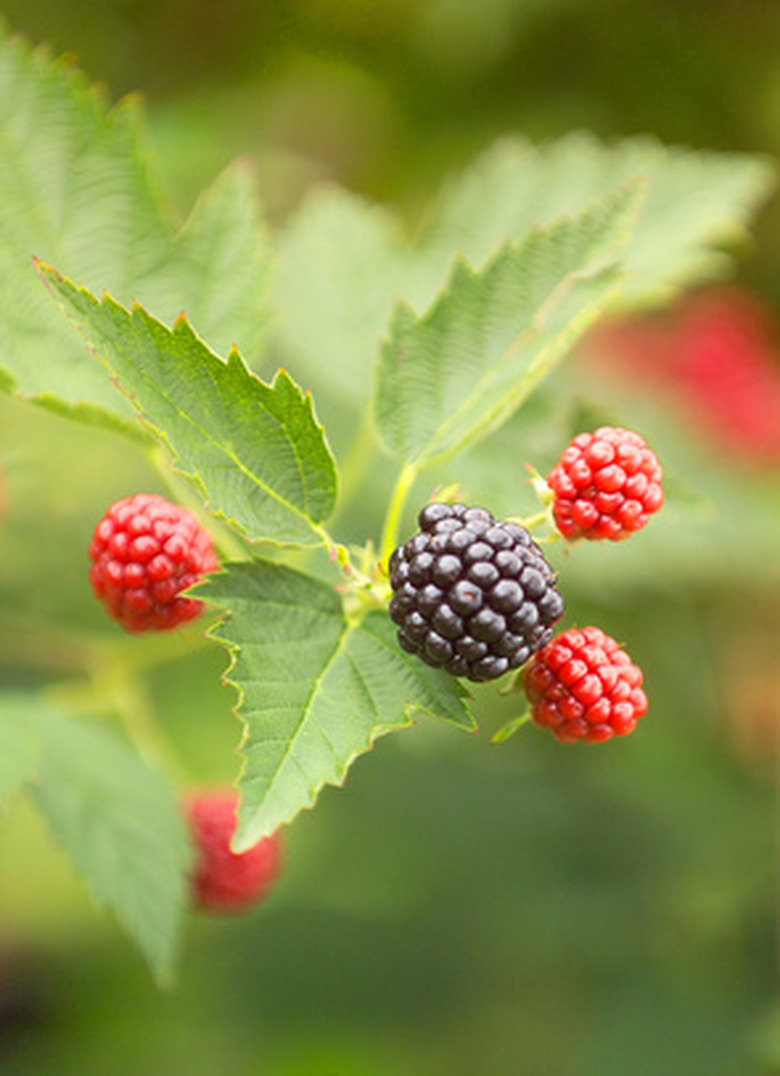Wild Blackberry Identification
Wild blackberries (Rubus spp.) are also referred to as brambles because of the tangled, thorny growth they create. There are 11 species that grow in the wild throughout the United States. Several were introduced from Asia, and four species are considered weeds because of their invasive growth. Blackberries are a source of food to both humans and animals as well as a source of cover for birds and animals. Some varieties stand erect, others are semi-erect and a few are trailing with long canes that sprawl over the ground.
Leaf Identification
Blackberries produce alternate leaves. They are either lobed or lobed and serrated. Some species develop leaflets in sets of three, while others develop five leaflets. Leaves are dark green, budding in late April to early May. The plant is deciduous, but often many leaves remain on the canes throughout winter. They grow to a length of about 1.5 to 3 inches long.
- Wild blackberries (Rubus spp.)
- Several were introduced from Asia, and four species are considered weeds because of their invasive growth.
Flower Identification
Blackberries are angiosperms, which means they produce flowers and then fruit to house the seeds of the plant. The flowers begin bud break mid to the end of May. Flowers are small, white and bear five petals in a star shape. Petals are narrow. The flower measures 1 to 2 inches across its widest point. Flowers bloom in clusters. Some may have a tinge of pink.
- Blackberries are angiosperms, which means they produce flowers and then fruit to house the seeds of the plant.
- The flowers begin bud break mid to the end of May.
- Flowers are small, white and bear five petals in a star shape.
Fruit Identification
Fruit develops toward the end of May to early June and begins as a small green collection of drupelets. As the fruit grows and ripens, the color gradually changes from green to white, then pale pink, red and finally to black. At maturity, the blackberry measures about half of an inch in length. Berries ripen by mid July. They are similar in appearance to raspberries.
Twig or Cane Identification
Young growth, or first year growth, will be green and slender with a diameter of ¼ to 3/8 inches. For thorned varieties, small, downward curved barbs sprout the length of the cane. The thorns are easily broken off. Older wood, from the second year on, takes on a reddish to brown coloration. Thorns are larger and harder but still break off the plant quite easily.
- Fruit develops toward the end of May to early June and begins as a small green collection of drupelets.
- For thorned varieties, small, downward curved barbs sprout the length of the cane.
Other Identification
Canes begin erect, but with time and depending on the variety, may become only partially erect and begin to arch as they grow taller. Some even arch to the ground, and a new plant will begin where the cane meets the ground. As a result, blackberry bushes grow in patches, as they easily spread in this manner and through the animal distribution of their seeds. Seldom will one blackberry plant be seen by itself. Look for clusters of plants when trying to identify wild blackberries.
